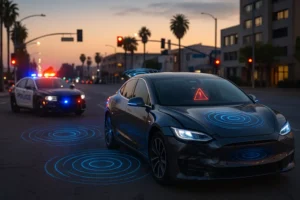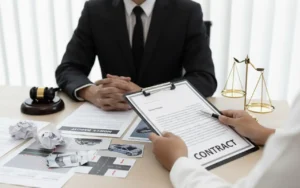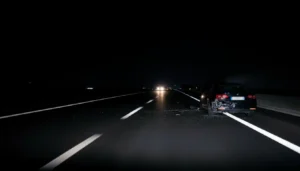Autonomous vehicles promise a future with fewer crashes, safer roads, and more convenience. Yet as these vehicles roll out across California, reality shows that technology can still fail. When self-driving systems malfunction or drivers misuse automated features, serious accidents happen — raising new questions about liability and compensation. If you were injured in a self-driving car accident liability California, understanding how fault is determined will help protect your rights.
Why Self-Driving Car Accidents Are Increasing in 2025
California is the epicenter of autonomous vehicle testing. Companies like Tesla, Waymo, Cruise, and Apple are operating fleets on public roads. But as the number of these vehicles grows, so do the risks. According to data from the NHTSA, over one-third of all U.S. crashes involving self-driving or partially automated vehicles now occur in California. Many are linked to sensor blind spots, faulty software updates, or delayed human intervention.
Despite their promise, these accidents remind us that even cutting-edge systems still rely on fallible human oversight — and that victims deserve accountability when technology causes harm.
Understanding the Levels of Vehicle Automation
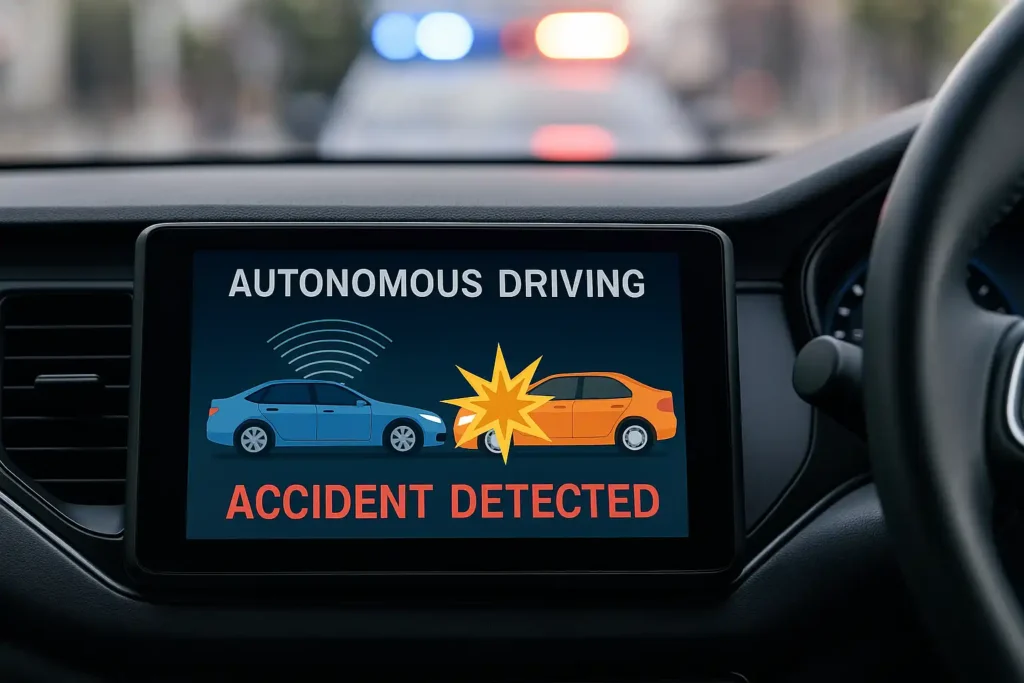
Not all “self-driving” cars are truly autonomous. The Society of Automotive Engineers (SAE) defines six levels of automation — from Level 0 (no automation) to Level 5 (fully autonomous). Most cars on California roads in 2025 are Level 2 or Level 3, meaning the driver must stay alert and ready to intervene. Knowing your vehicle’s automation level is crucial because it affects who can be held responsible when something goes wrong.
Who Can Be Held Liable After a Self-Driving Car Accident?
Liability depends on the type of malfunction or negligence involved. Unlike a typical car crash, where one driver is usually at fault, self-driving car accidents may involve multiple liable parties:
- Human Driver: The operator is still responsible for monitoring the system and taking control when necessary. Failing to do so can constitute negligence.
- Vehicle Manufacturer: Automakers can be held liable for defective sensors, braking systems, or autopilot software that causes crashes.
- Software Developer: When faulty coding or artificial intelligence misjudges traffic or weather conditions, developers may share fault.
- Parts Supplier: If a specific component (e.g., a camera or radar sensor) fails, the supplier could face a product liability claim.
- Fleet Operator or Company: For rideshare or delivery services using autonomous fleets, corporate negligence in maintenance or oversight can be cited.
California’s comparative fault system allows multiple parties to share responsibility. Even if the human operator was partly at fault, victims can still recover compensation proportional to the other party’s negligence.
California Laws on Self-Driving Vehicle Responsibility
Under California Vehicle Code §38750, autonomous vehicle operators must carry at least $5 million in insurance coverage. In addition, the manufacturer must certify that the car can safely operate without active driver control. However, accidents often reveal discrepancies between what technology promises and what it delivers.
In 2025, new amendments to the code now require manufacturers to submit post-collision data logs to the California Department of Motor Vehicles within 10 days of an incident. This ensures that accident victims can access technical data for legal claims.
Common Causes of Self-Driving Car Accidents
- Sensor Failure: Cameras or radar misreading nearby vehicles or pedestrians.
- Software Errors: Updates introducing bugs or disabling safety protocols.
- Human Overreliance: Drivers ignoring alerts or falling asleep assuming the car will self-correct.
- Infrastructure Limitations: Faded lane markings or poor GPS mapping in rural areas.
- Weather Conditions: Rain or fog interfering with lidar and camera systems.
These factors often combine to create deadly situations that neither human nor AI can fully anticipate.
Real-World Examples of 2025 California Cases
Several recent incidents illustrate the challenge of assigning blame:
- San Francisco: A Cruise autonomous vehicle braked unexpectedly, causing a rear-end collision. Data logs showed a software miscalculation of pedestrian movement.
- Los Angeles: A Tesla Model S in autopilot mode failed to detect a merging truck, leading to serious injuries. The automaker later issued a recall for radar recalibration.
- San Jose: A Waymo car misjudged lane width and sideswiped another vehicle, prompting a debate over AI interpretation of construction zones.
Each case involves shared accountability between software engineers, manufacturers, and drivers. Attorneys use these precedents to build stronger claims for victims.
Legal Theories Used in Self-Driving Car Lawsuits
Depending on the facts, your lawyer may use one or more of these legal strategies:
- Negligence: When a driver or operator fails to act reasonably or ignores system warnings.
- Product Liability: When a manufacturer sells a vehicle with defective hardware or software that causes harm.
- Strict Liability: When a defect exists regardless of the manufacturer’s intent or awareness.
- Failure to Warn: When companies fail to adequately disclose known software risks or operational limitations.
Proving these claims often requires digital forensics, expert witnesses, and system data extracted directly from the vehicle’s black box or onboard computer.
What to Do Immediately After a Self-Driving Car Crash
Even in high-tech collisions, the basics still matter. Here’s what to do:
- Ensure Safety: Move to a secure location and call emergency services.
- Gather Evidence: Take wide-angle photos of the vehicles, sensors, and nearby traffic cameras.
- Ask for Company Information: If the vehicle belongs to a fleet (Cruise, Waymo, etc.), note its vehicle ID number.
- Request Medical Attention: Some injuries from autonomous crashes appear hours later due to shock or adrenaline.
- Consult a Lawyer: A California accident lawyer can subpoena data logs and negotiate with insurers.
Damages You Can Recover
Victims of self-driving car accidents are eligible to claim both economic and non-economic damages, including:
- Medical bills and ongoing rehabilitation
- Vehicle repair or replacement costs
- Lost wages and future earning capacity
- Pain, suffering, and emotional trauma
- Loss of consortium for family members
In cases involving gross negligence — such as failure to issue recalls after known malfunctions — courts may also award punitive damages.
How Lawyers Prove Fault in Self-Driving Car Cases
Proving liability requires more than eyewitness testimony. Attorneys often rely on advanced digital evidence, including:
- Event data recorder (EDR) logs showing sensor and control inputs
- Manufacturer update records and software version history
- Traffic camera or dashcam footage
- Expert analysis from automotive engineers and AI specialists
By combining this technical evidence with traditional accident reports, your lawyer can establish a strong case for compensation.
How These Cases Impact Future Regulations
Each autonomous vehicle crash in California influences the future of road safety. Regulators are now pushing for mandatory data-sharing among automakers and standardized driver training for semi-autonomous systems. Some lawmakers even propose “digital black box transparency” laws — giving accident victims full access to AI decision data after a crash.
This trend shows California’s commitment to balancing innovation with accountability.
Final Thoughts
Self-driving technology may transform transportation, but when it fails, victims shouldn’t bear the cost. Whether the cause is a software bug, faulty sensor, or inattentive driver, self-driving car accident liability California. If you or a loved one has been injured in a self-driving car accident liability California, contact Accident Advocate today. Our experienced attorneys specialize in emerging vehicle liability and will fight to secure the compensation you deserve while holding negligent parties — human or digital — responsible for their actions.

